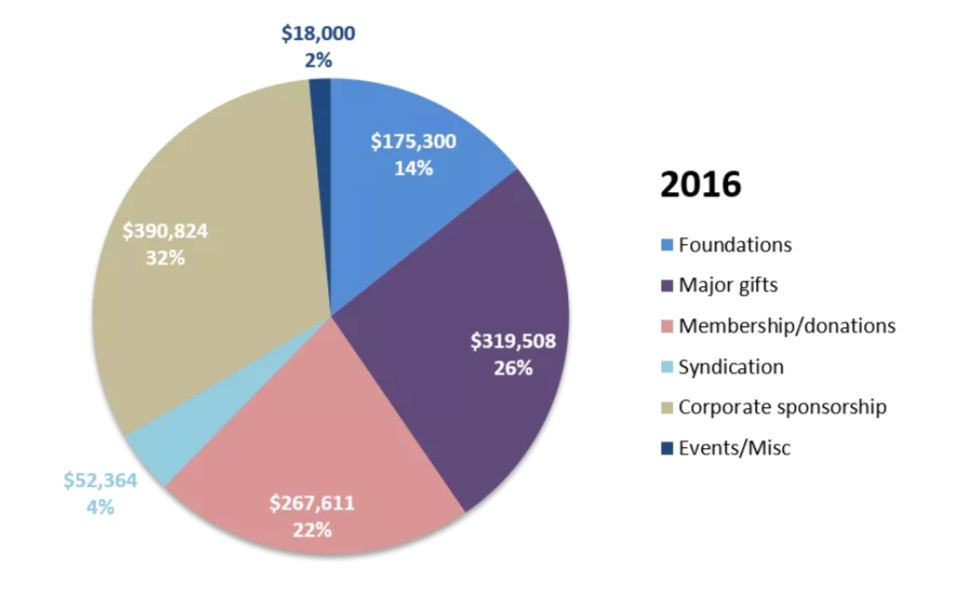A new case study out from the Institute for Nonprofit News and the Shorenstein Center explores the origin story and growth of VT Digger in useful detail.
While we’ve covered the site’s various new projects extensively in the past, the case study offers many specific takeaways on how to grow a local news site.
— Don’t forget to make sales a priority:
Good sales people for nonprofit news sites are hard to find because they need to understand both the mission and the medium. Digger’s first sales director, Michael Knight, came out of newspaper ad sales, so he was accustomed to being rejected. Its newest sales person, Christina Griffin, has experience in pharmaceutical sales, so she’s used to cold calls. “You have to know if this person has the capacity to blend mission and ROI and know in any given circumstance how they’re going to pitch a potential underwriter,” said Theresa MurrayClasen, Digger’s director of underwriting since 2015. “You have to be very nimble and quick on your feet but also good at research — you really need a good understanding about what you might face when you walk in the door. And lastly, you have to match the product to (the sponsor.) You don’t want to pitch them on podcasts or video if they have no chance in hell of ever coming up with video content.”

— Assemble a board that can support you in all the ways.
An often-overlooked ingredient in the success of any enterprise is the makeup and effectiveness of its board. Digger’s board of trustees is 14 strong, with a healthy mix of backgrounds in journalism, finance, fundraising, public relations, and philanthropy.
The board contributes financially in a big way; in 2017 its members collectively gave just over $100,000, or 8 percent of the total operating budget. Board chair Curtis Koren said some board members are independently wealthy, but most are not. “It just shows a commitment to the cause. They all admire [Digger]. They’re all in.”
The board introduced VTDigger’s founder Anne Galloway to a key donor, Lyman Orton. VT Digger has also benefited uniquely from a multiyear, multimillion-dollar “growth fund,” set up smartly to focus on encouraging other philanthropists to give with the understanding that their money would go to long-term investments in the organization itself:
Orton and his wife, Janice Izzi, gave $1 million to help catalyze an investment from other wealthy philanthropists across the state. On a $5 million goal, Digger is up to almost $2 million (about $750,000 in hand, and an additional $1.2 million in pledges).
The growth fund’s objective is to double readership, revenue, and impact in five years. So, by 2022, Digger expects to generate nearly $3 million in annual operating revenue. Essentially the pitch was: “give us the funds to spend right now, to spend on business, technology, and reporting, so that funding will be sustainable in year six.”
— Yes, email is super important:
Digger has seen double-digit percentage growth in email subscribers every year since 2013. Why?
It has an email newsletter signup call-to-action on virtually every page of the site, and uses a frictionless one-step process for registration. It also uses the Sumo third-party tool, which prompts readers to sign up based on scroll depth (essentially triggering the ask when readers are finished with any story.) This tactic alone results in about 200 monthly newsletter starts. Digger staff members collect emails at live events and promote the newsletter on Facebook Live.
— Don’t forget about search. Here are some things to look out for:
— Google Grants. Digger maximizes the AdWords allowance from this nonprofit program. You should too.
— An outside SEO expert helped Digger staff identify common and easily fixable problems, like image tagging and use of keywords/taxonomy.
— Site speed. The site was rebuilt with an emphasis on page load times.
You should read the case study by Tim Griggs in its entirety, with many more pieces of advice, here.